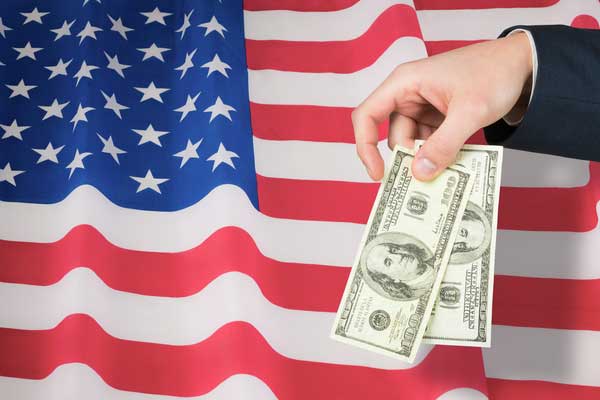The US dollar is one of the most widely used currencies in the world, yet it lags behind many other countries when it comes to adopting modern features. In 2023, the US Federal Reserve will spend $9314 million to print paper bills, but there are growing calls to overhaul and upgrade American cash.

Other countries like India, the Nordic nations and Australia have transitioned fully or partially away from paper money to polymer notes and coins. The benefits are durability, cost savings and incorporating anti-counterfeiting technologies. However, American currency has remained stuck in the past, still using a cotton-linen paper blend for notes first introduced in the 1860s.
The Popularity of the $100 Bill Reveals Questionable Usage
While the $1 bill was historically the most circulated banknote, it has now been overtaken by the $100 bill. In 2021, there were $8.5 billion $100 notes in circulation compared to $14.3 billion $1 bills. Some experts believe the prevalence of large bills facilitates tax avoidance or illegal transactions, since cash offers anonymity. Another theory is that higher denominations are favored as a reliable store of value, both domestically and globally.
The rise of digital payments suggests cash usage may decline over time. Recent surveys indicate around 40% of Americans can go a full week without using physical currency. Yet paradoxically, the overall quantity of cash in the economy keeps expanding year after year. This reflects the enduring utility of cash for various purposes.
Coins Offer Longevity But Lack Popularity
The Federal Reserve has periodically tried to shift small denominations from paper to coins to increase durability. The $1 silver certificate coin was introduced in the 1920s along with the $2 bill, but the public resisted adopting them. The half dollar coin lost traction when parking meters omitted it as an option.
Similarly, proposals for a $1 coin have stalled due to pushback from paper money advocates. But experts argue a metal dollar could last 30 years in circulation compared to just 6 for the note equivalent. Abroad, coins are ubiquitous for low value units like the Canadian Loonie and various European euros. Yet past efforts to popularize dollar coins in America have failed due to lack of infrastructure support.
Advocates Call for Polymer Notes to Replace Cotton-Linen
Since Australia first issued polymer banknotes in 1988, they have been adopted in dozens of countries. Polymer notes offer 4 times the lifespan of paper and have advanced security features. Canada and the UK now use composite plastic notes for some denominations. However, the US Treasury has resisted updating to polymer despite the longer lifespan.
Some analysts believe the current paper note composition is continued partly due to the lobbying influence of the cotton industry. The Bureau of Engraving and Printing employs 15,000 workers who could be impacted by substantial changes to currency materials and design. However, polymer notes have environmental benefits and enhance anti-counterfeiting efforts.
Growing Access to Digital Transactions Allows Cash Avoidance
Surveys show convenience is one of the most important factors influencing how Americans choose to pay. Younger demographics in particular are embracing cashless payments through options like payment apps, credit/debit cards and stored value cards. New technologies now also allow transferring funds between digital wallets or even converting physical cash into a digital balance.
This expanding digital ecosystem allows those who prefer electronic transactions to opt out of cash altogether. Some jurisdictions like New York City have passed legislation to mandate that businesses must continue accepting cash. But in general, the shift towards cashless commerce now allows consumers to pay however they please.
Radical Upgrades to Cash Are Possible with Blockchain Technology
While polymer notes and coins offer incremental improvements, truly transformational changes to currency may emerge from blockchain and related innovations. A digital dollar could be created to mirror physical cash on a decentralized ledger. Banknotes embedded with RFID chips could enable offline transactions via mobile wallets tied to blockchain accounts.
These sci-fi sounding concepts illustrate how cash could persist in parallel with other emerging payment rails. Instead of fading away, physical currency could evolve to possess digital capabilities that enhance utility and security. The future of money may lie in hybrid systems that fuse traditional paper notes with virtual functionality.
Conclusion
American currency stands out as antiquated compared to the polymer notes and vertical cash ecosystems found abroad. While the Federal Reserve remains committed to familiar cotton-linen bills for now, there are compelling reasons to upgrade to more durable materials and denominations.
Coins could replace small paper notes, and blockchain technology creates potential for cash to take on digital capabilities. However, the USD retains global reach despite its dated design. As consumer preferences and payment technologies continue evolving, the time may soon come for revolutionary changes to modernize and enhance US currency.
